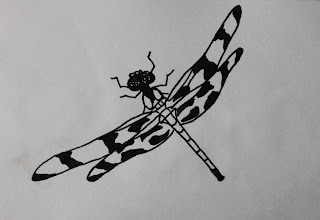Our first couple of weeks was on Dying and we got loads of information on dyes and methods that was really interesting.
This week was on Paint. Artists are using Acrylic paint, Watercolour paint, gouache, Inktense pencils, india ink. Since I have Inktense pencils, I decided to experiment with them. Inktense are not watercolour but are acrylic ink so when they dry they are somewhat permanent.
I started by wetting my fabric with water and then coloured into the water with the pencils. The water made them bleed a bit but because I was doing washes on the fabric, I didn't mind. I actually liked the look of the bleeding. Once I was done adding colour, I took a brush and brushed on a solution of water and fabric medium to help the colour adhere to the fabric better. This seemed to smooth and soften the colour and when it dried the colour seemed lighter than when I put it down. That is something to keep in mind if I am looking for stronger colour. I may have to go back into it with more colour later.
 |
| This is how the blue turned out after it dried and I had heat set it with my iron. |
Then I tried to draw an apple and a lily on dry fabric with the pencils and then went over it with the water and medium and was disappointed that the liquid bled outside the apple and lily and took the colours with it. I have since heard that if I use spray starch on the fabric first, this will stop the bleeding.
I still have some experimenting to to with these pencils because I like the way they look like watercolour and are delicate looking.








































